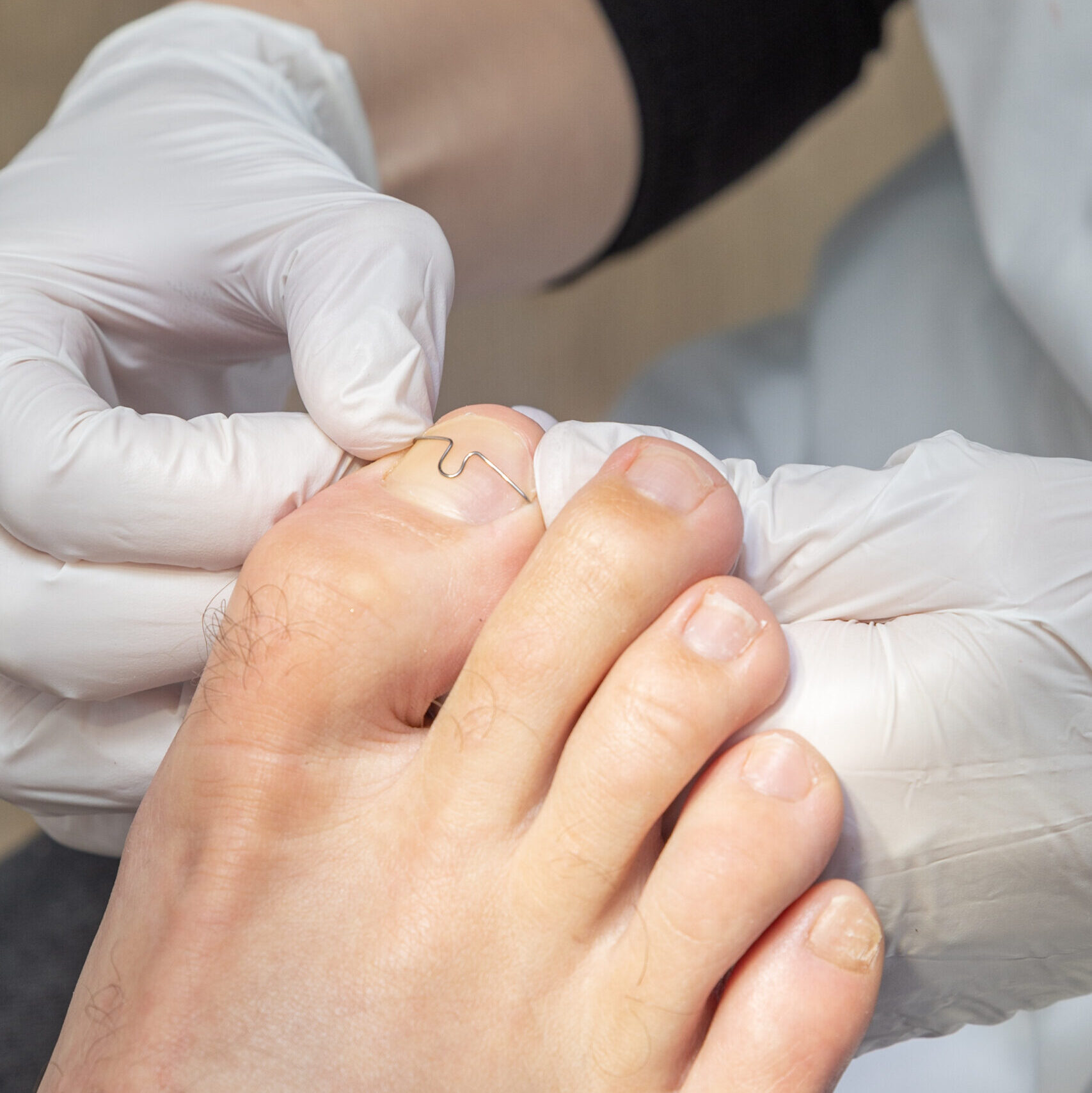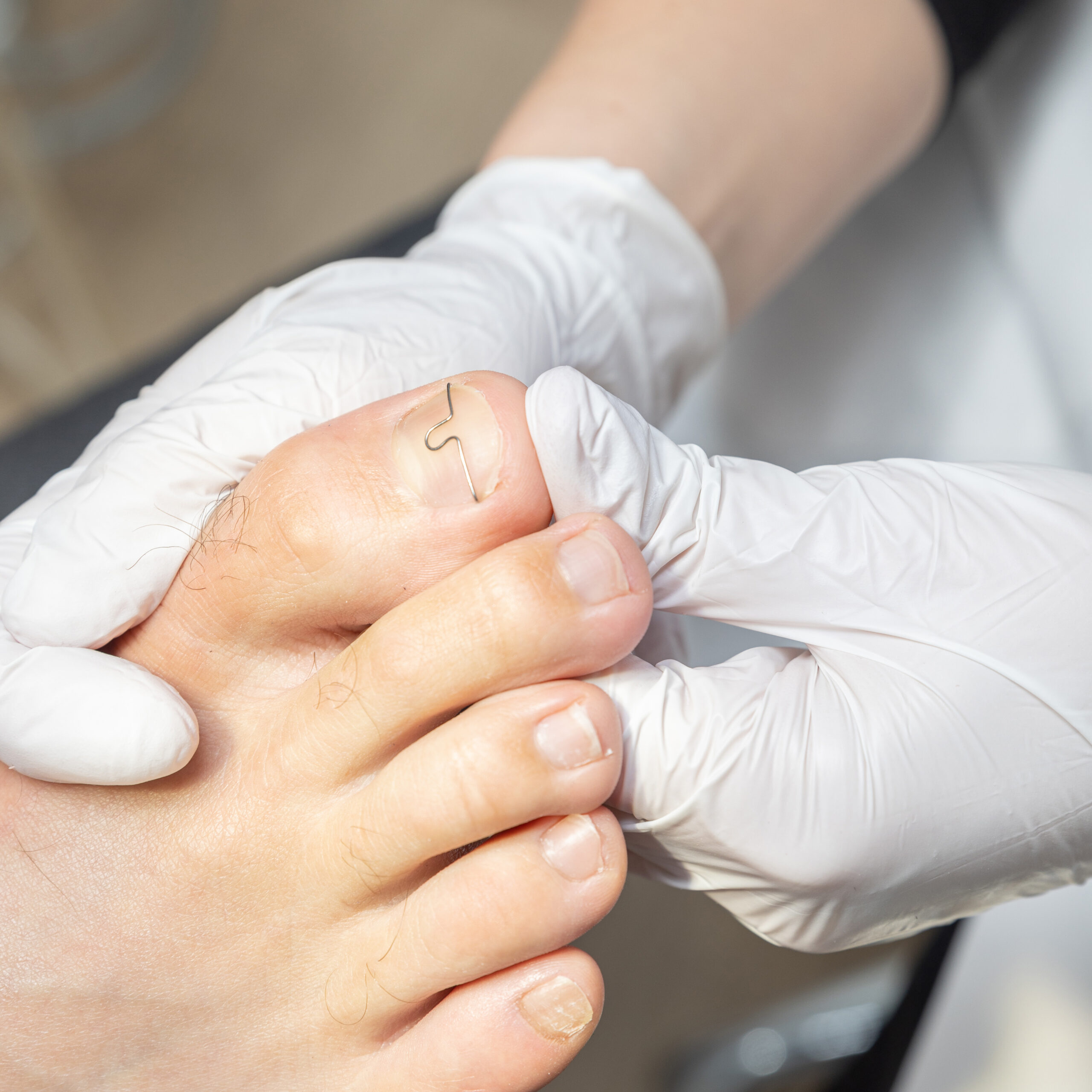Orthonyxia for ingrown toenails

Céline De Prêtre, Podiatrist
Ingrown toenails (also called unguis incarnatus) are a common problem in the general population.
The problem occurs so frequently that last year the Dutch Journal of Medicine (Just A.H. Eekhof*) published a study on the “Ingrown Toenail”. In it, the different treatment options are compared with each other.
Treatment depends on the stage of the problem
Three stages of ingrown toenails are determined in the study:
| Stage I | Characterised by swelling of the nail tip, oedema, erythema and pain on pressure. |
| Stage II | There is additional inflammation and infection of the nail bed. |
| Stage III | Chronic inflammation leading to the formation of granulation tissue. |

The podiatrists at House of Feet look for the root cause of the ingrowth and initiate treatment called orthonyxia to prevent it recurring in the future. Orthonyxia is a collective term for all techniques which involve the straightening of nails and improving nail growth.
How do the podiatrists at House of Feet treat orthonyxia?
One of the indications of orthonyxia is unguis incarnatus (ingrown toenail) or when the abnormal shape of the nail causes pain (e.g. hyperconvex nail pushing too much into the sulci). With the help of orthonyxia, the nail plate becomes flatter again and/or no longer pushes into the sulci.
It is important to note that we do not place nail braces if inflammation is still present. The inflammation receives attention and should be addressed as a first step. A nail brace can then be placed to preserve the long-term result.
Different types of nail braces
There are different types of nail braces. In practice, at House of Feet we use the BS SPANGE and Ross Fraser technique. The nail brace is produced on site and checked and tightened/corrected every few weeks. BS Spange is most commonly used in high risk patients and when the nail sulci is not completely free. Naturally, each situation is considered individually and the appropriate technique is carefully applied. In this way we achieve ‘customised foot care’.
Do you often see patients with an ingrown toenail yourself? Or do patients come back to you for consultations with the same problem time and again? Contact our team for assistance.
* Just A.H. Eekhof, B. v. (sd). Interventions for ingrowing toenails. Cochrane Database of Systematic Reviews.

KNOWLEDGE AND EXPERTISE PLATFORM
Stay informed via e-mail about our latest developments on shoe technology.



